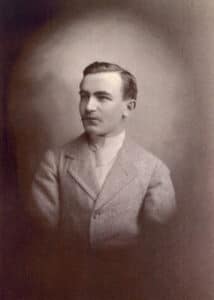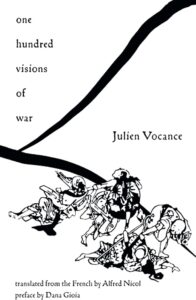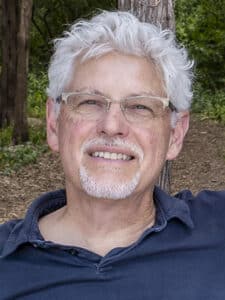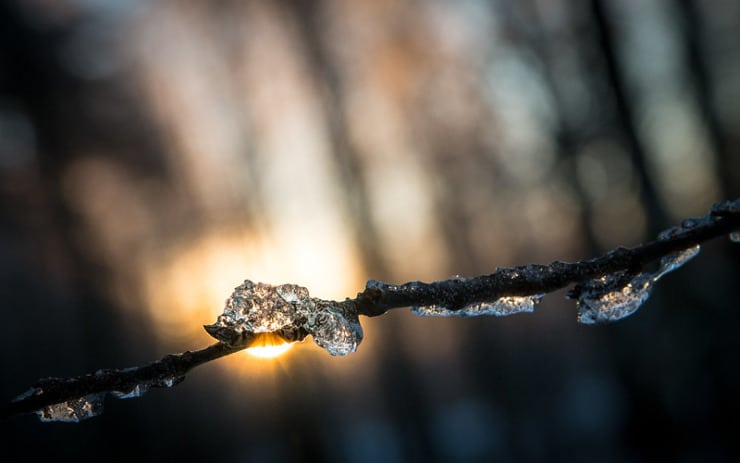Julien Vocance used haiku poetry to grapple with the daily reality of war
I’ll be honest here. I thought I knew, or was at least aware of, the major poets, British and otherwise, of World War I. I was wrong. I’d never heard of the poet Julien Vocance. One black eye for me.
He wasn’t just another war poet. Vocance did something that no one had done before. He used the haiku form of poetry to help him understand what he’d experienced in the Great War. And it was his work, collected as One Hundred Visions of War, that first popularized the writing of haiku.
Perhaps that’s two black eyes for me—one for not knowing Vocance, and one for not knowing how the haiku form moved into Western culture.

Joseph Seguin, aka Julien Vocance
Julien Vocance (1878-1954) was the pen name of the French poet Joseph Seguin. He fought in World War I and lost an eye in the conflict. His One Hundred Visions of War was one of the most unusual poetry collections about the conflict to come from any nation, for two reasons.
First, Vocance avoided the response to the war by his fellow French poets, neither glorifying the war as a noble cause nor reacting in horror to the mass slaughter experienced with mechanized warfare. As poet Dana Gioia points out in the preface, Vocance used poetry to come to grips with the day-to-day reality of the war.
Second, he used the haiku form of poetry. It had recently been introduced in the West from Japan, but it was Vocance’s poems that put haiku on the poetic map.
The books is recently translated by Alfred Nicol and republished by Wiseblood Books, and one’s first response is surprise. Use haiku poems to describe war? Vocance ignored all the supposed rules of haiku when he employed the form for the subject of war; you won’t find descriptions of nature here. Nicol’s translation brings the poems closer to what we know as traditional haiku, without losing the impact of what they’re describing.
All 100 poems were written in 1916 “in the mud of the trenches.” They don’t convey a continuing narrative, with a beginning, middle, and climactic ending. Instead, we’re given snapshots of war, brief moments of time describing what Vocance was experiencing.

shake with such violent coughing
it can’t last. It can’t.
Later on, he writes this:
Nights, we carry to
the white wooden burial place
victims of the day.
You read a hundred of these poems, and you end shocked with the horror and lunacy of what’s happening. These are poems attempting to make sense of the meaning of war’s daily experiences. Underlying them is the sense that the attempt to understand will be futile. The poems are a lament for the destruction of what has been, physical, cultural, and spiritual, a cry against what the world has become.
Two rows of trenches,
Two lines of barbed-wire fences:
Civilization.

Alfred Nicol
Translator Nicol is a published poet with several of his own poetry collections, including Winter Light (which received the Richard Wilbur Award), Elegy for Everyone, Animal Psalms, and collaborations with poet Rhina Espaillat and his sister, artist Elise Nicol. His published have appeared in Poetry, The New England Review, Dark Horse, Commonweal, The Hopkins Review, and other literary publications. He lives in Massachusetts.
Vocance used the form of hakiu poetry to depict war in a way that few forms can do. You experience war in its immediacy and in its momentary horror punctuated by aftershock and even numbness. One Hundred Visions of War isn’t a narrative, but it does tell an exceptionally powerful story. If you ever considered that war might possibly have its romantic aspect, read these poems and be disabused of your notion.
Photo by Mr Moss, Creative Commons, via Flickr. Post by Glynn Young.
How to Read a Poem uses images like the mouse, the hive, the switch (from the Billy Collins poem)—to guide readers into new ways of understanding poems. Anthology included.
“I require all our incoming poetry students—in the MFA I direct—to buy and read this book.”
—Jeanetta Calhoun Mish
- Poets and Poems: Beth Copeland and “I Ask the Mountain to Heal My Heart” - July 10, 2025
- A.E. Stallings: the Parthenon Marbles, Poets, and Artists - July 8, 2025
- Poets and Fables: Steven Flint and “The Sun and the Boy” - July 3, 2025


Laura Lynn Brown says
I appreciate this backstory on one way that a Japanese form found its way into Western culture. I wonder if he chose it partly because of its economy — how do you write about something so awful? Many have, of course, but these seem to capture moments that made an impression. These you selected are imagistic and memorable.
Glynn says
Laura Lynn, I think that was exactly the reason. For Vocance, the war wasn’t an epic, a love poem, a sonnet, or anything he’d previously known. It wasn’t a story that could be told with a traditional narrative. Instead, he offered moments in his life in the trenches, and the haiku form fit that perfectly.